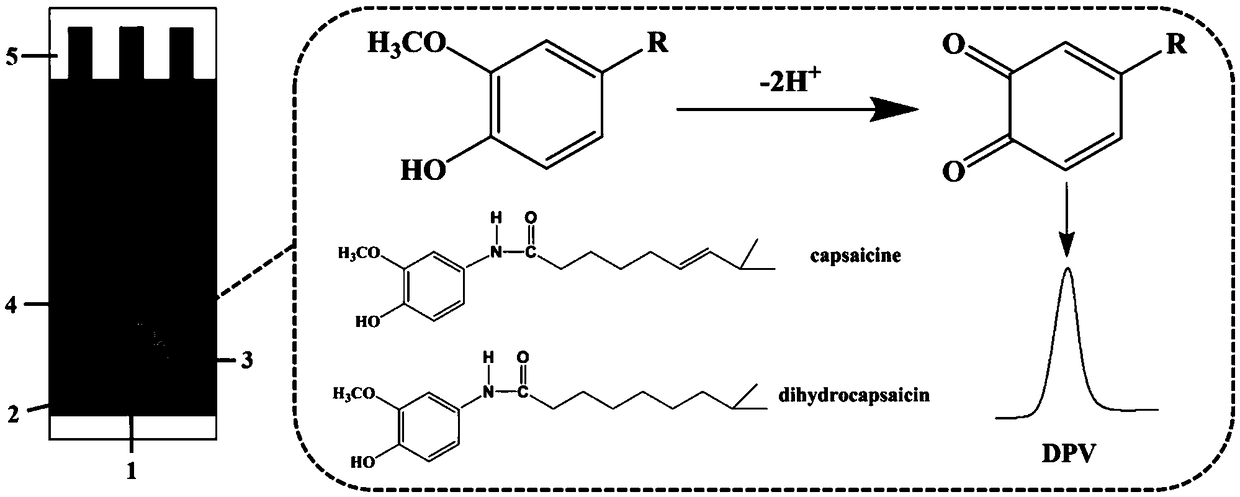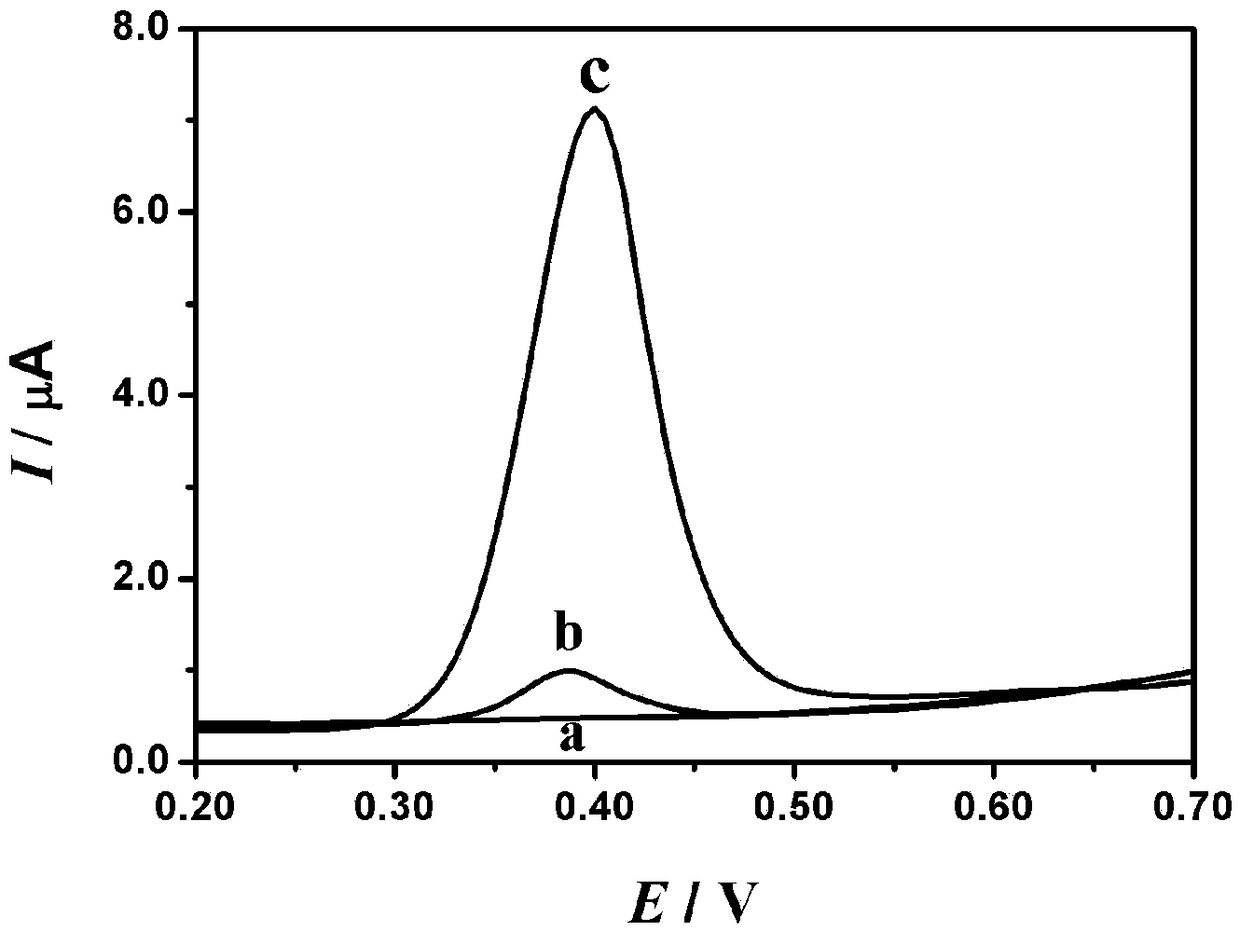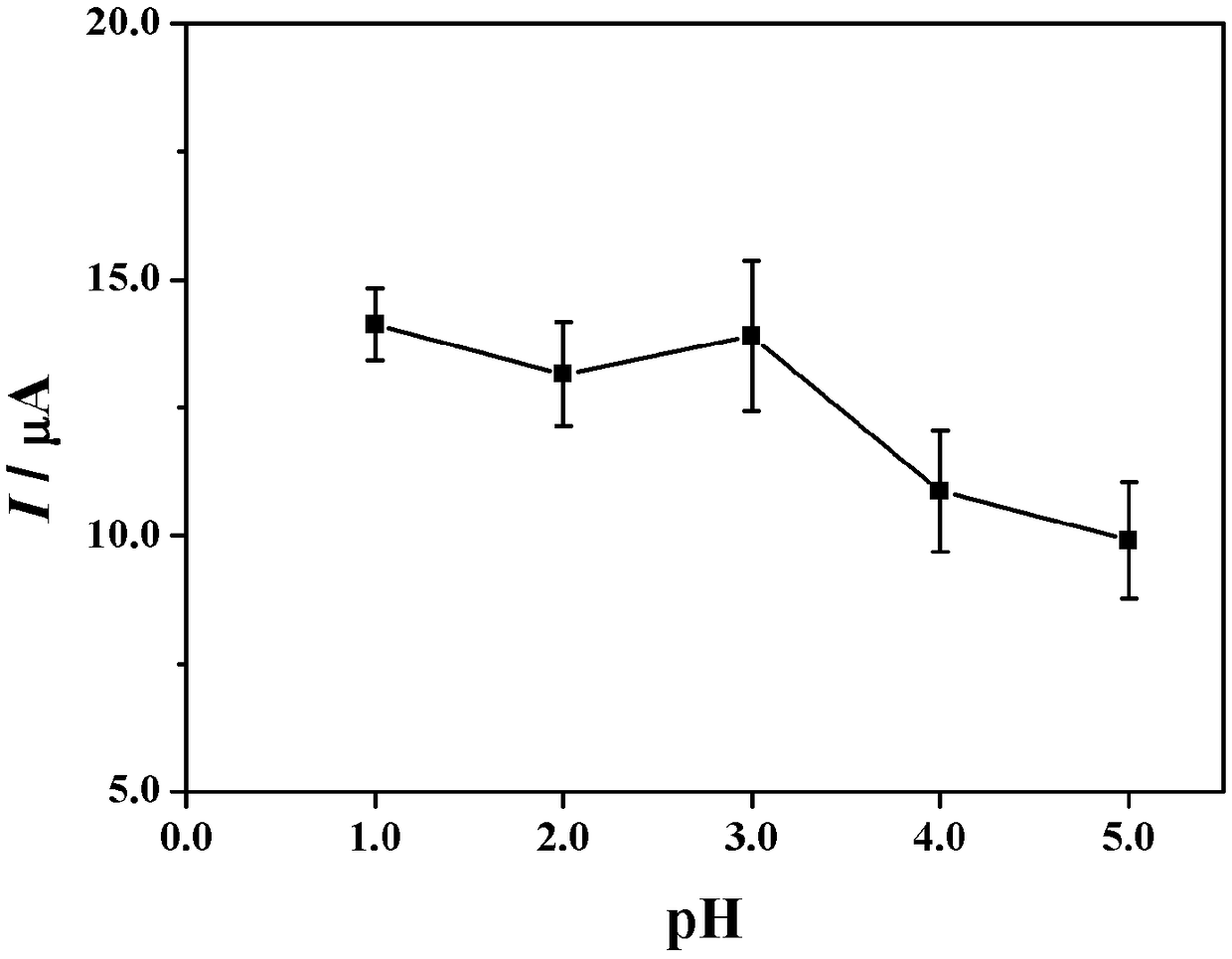Electrochemical detection method for capsaicine in peppers
A detection method and electrochemical technology, applied in the field of electrochemical detection, can solve the problems of complicated operation steps, long detection time and high detection cost, and achieve the effects of reducing background current, simple operation and simple manufacturing process.
- Summary
- Abstract
- Description
- Claims
- Application Information
AI Technical Summary
Problems solved by technology
Method used
Image
Examples
Embodiment 1
[0037] Example 1: Preparation of the screen-printed carbon electrode of the present invention
[0038] The screen printing carbon electrode of the present invention is to sequentially print carbon paste, Ag / AgCl paste and insulating paste on a PET substrate. Specifically include the following steps:
[0039] 1) Clean the PET substrate, print carbon paste on the PET substrate after drying, make a carbon working electrode and a carbon paste auxiliary electrode, and dry at room temperature;
[0040] 2) Print a silver paste containing silver chloride on the above PET substrate to make an Ag / AgCl reference electrode, and dry it at room temperature;
[0041] 3) Avoid the circular working area, and print insulating paste on the above PET substrate to cover the wires;
[0042] 4) The above-mentioned working electrode, auxiliary electrode and reference electrode form a circular working area, and each electrode is connected to the interface through a wire under the insulating film, and then drie...
Embodiment 2
[0044] Example 2: Electrochemical detection method of capsaicin in pepper
[0045] 1) Preparation of solution: prepare a 100.0mmol / L, pH 1.0 HCl solution with ultrapure water and place it in a container for later use.
[0046] 2) Sample pretreatment: Grind and homogenize fresh peppers, accurately weigh 0.2g into 12mL of absolute ethanol, stir and mix well.
[0047] 3) Place a volumetric flask containing the 50 mL mixture processed in step 2) in an ultrasonic cleaner, and stir for 2 hours with a magnetic stirrer after 20 minutes of ultrasonic treatment to thoroughly mix the capsicum with absolute ethanol.
[0048] 4) Centrifuge the solution obtained in step 3) at 10000 rpm and 4°C for 10 minutes, and save the supernatant. Filter the supernatant with a 0.22μm filter membrane, vortex and mix the filtrate, take 200μL into an Ep tube, and place it in a vacuum centrifugal concentrator for drying.
[0049] 5) Use 4 mL of the dried extract from step 4) containing HCl and supporting electrolyte...
Embodiment 3
[0052] This example is a verification of the detection principle of the electrochemical method, and the results are shown in figure 2 . In the figure, curve a is the DPV curve of the blank solution; curve b is the DPV curve of the capsaicin solution containing 10.0μmol / L without enrichment treatment; curve c is the DPV curve after stirring and enrichment at -0.1V enrichment potential for 60s DPV curve of capsaicin solution containing 10.0μmol / L. by figure 2 It can be seen that no obvious electrochemical response signal is observed in curve a; an oxidation peak current signal is generated at 0.39V in curve b, indicating that the obtained electrochemical signal is produced by oxidation of capsaicin. Comparing curves b and c, it can be seen that the electrochemical response signal of capsaicin is significantly improved after the enrichment treatment, indicating that the enrichment treatment effectively improves the detection sensitivity.
PUM
 Login to View More
Login to View More Abstract
Description
Claims
Application Information
 Login to View More
Login to View More - R&D
- Intellectual Property
- Life Sciences
- Materials
- Tech Scout
- Unparalleled Data Quality
- Higher Quality Content
- 60% Fewer Hallucinations
Browse by: Latest US Patents, China's latest patents, Technical Efficacy Thesaurus, Application Domain, Technology Topic, Popular Technical Reports.
© 2025 PatSnap. All rights reserved.Legal|Privacy policy|Modern Slavery Act Transparency Statement|Sitemap|About US| Contact US: help@patsnap.com



